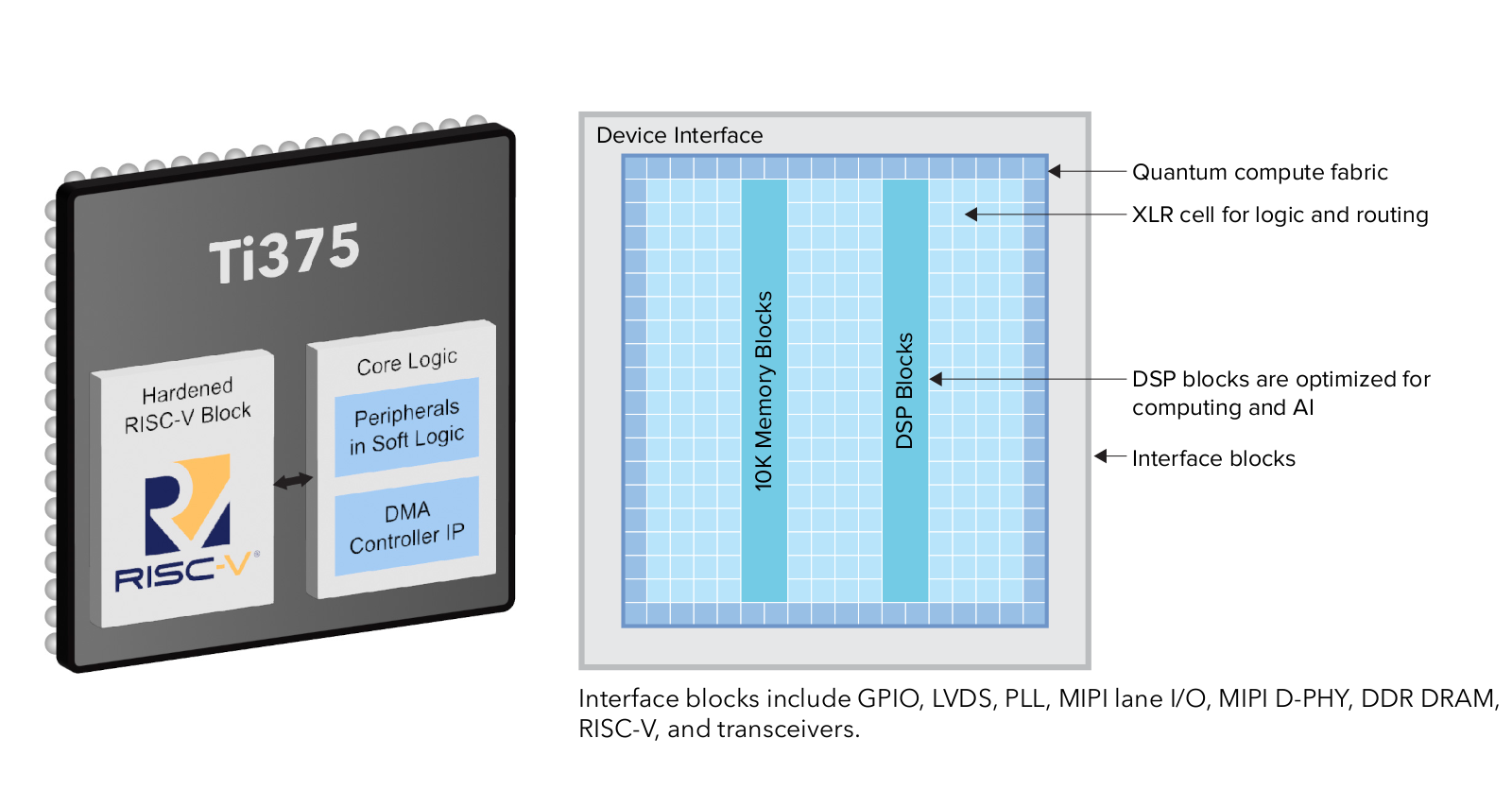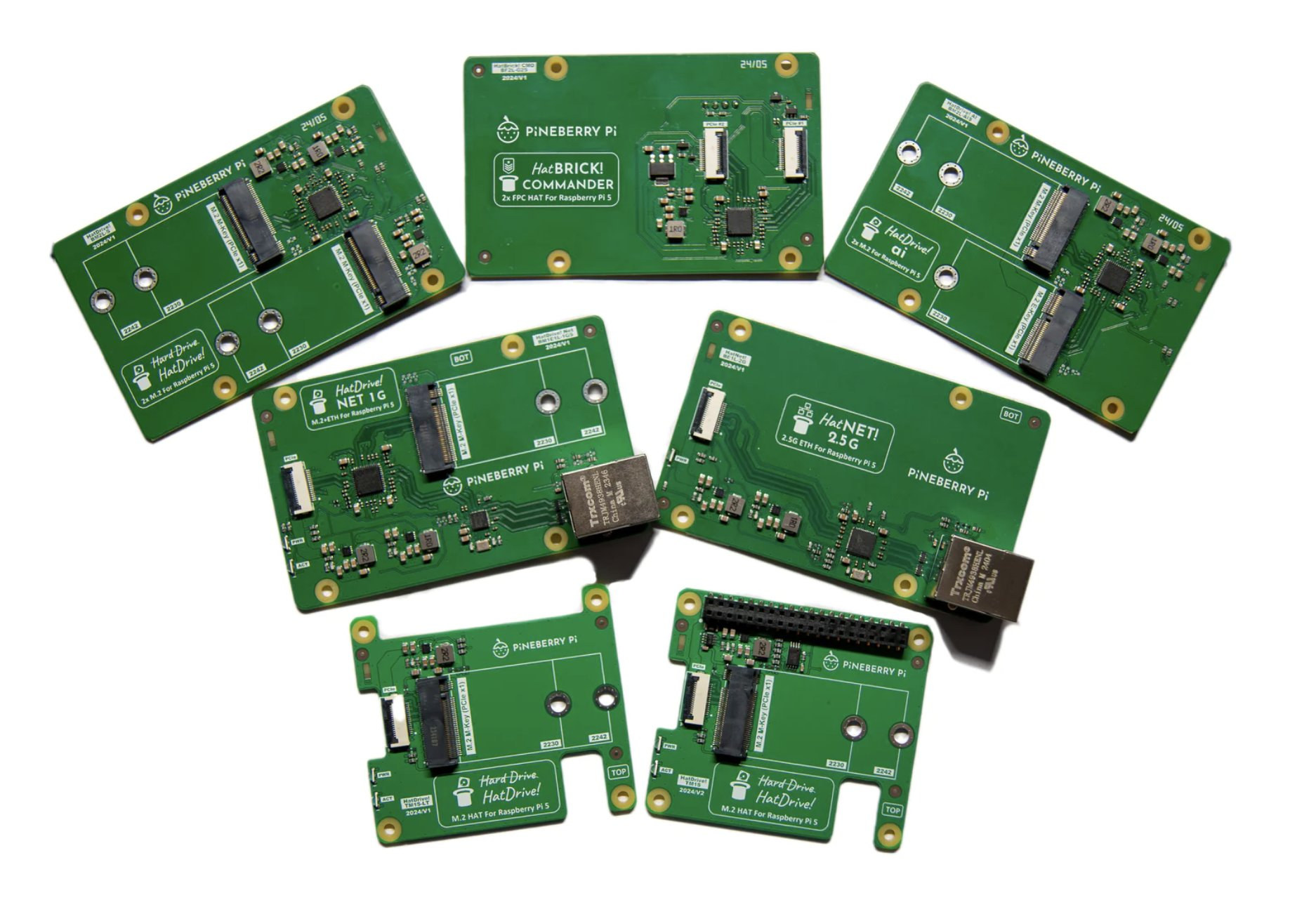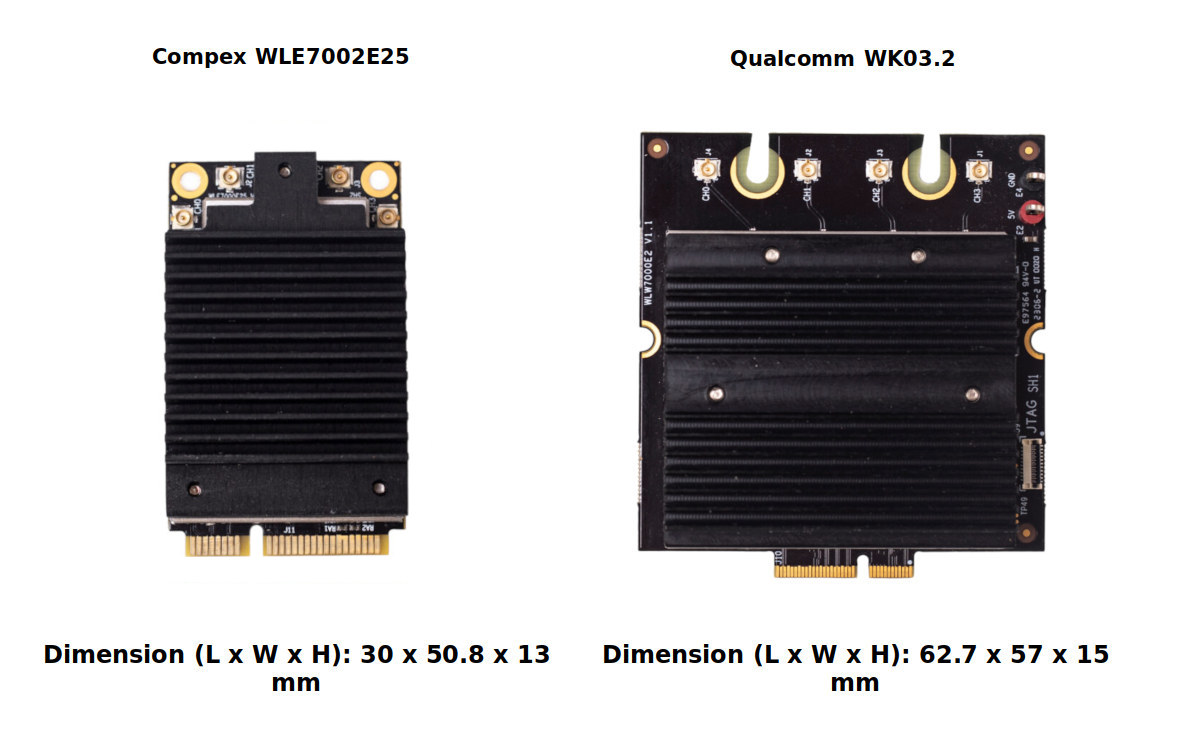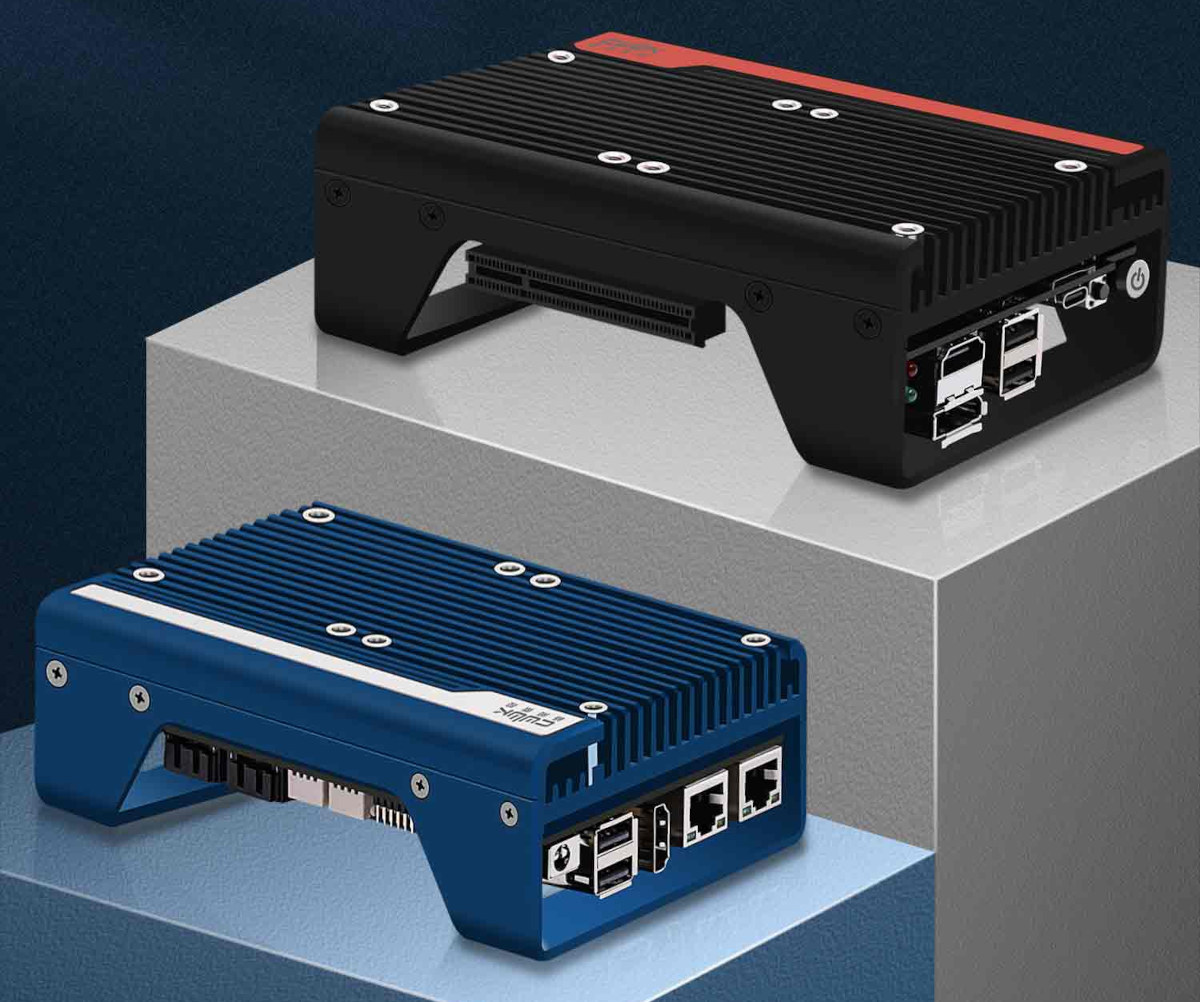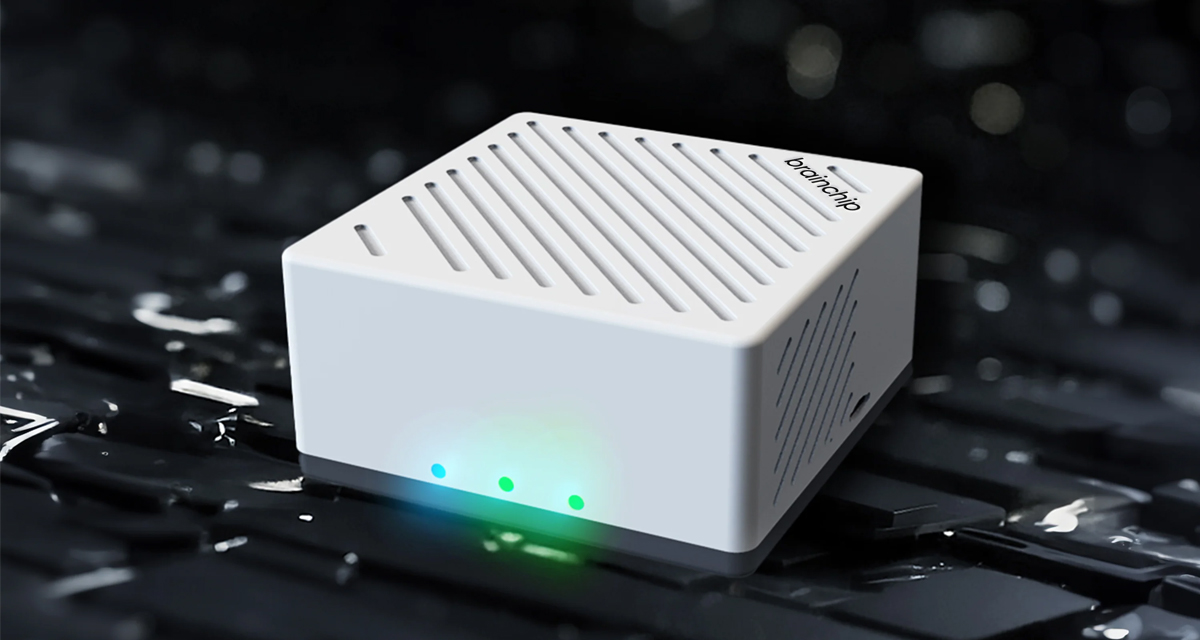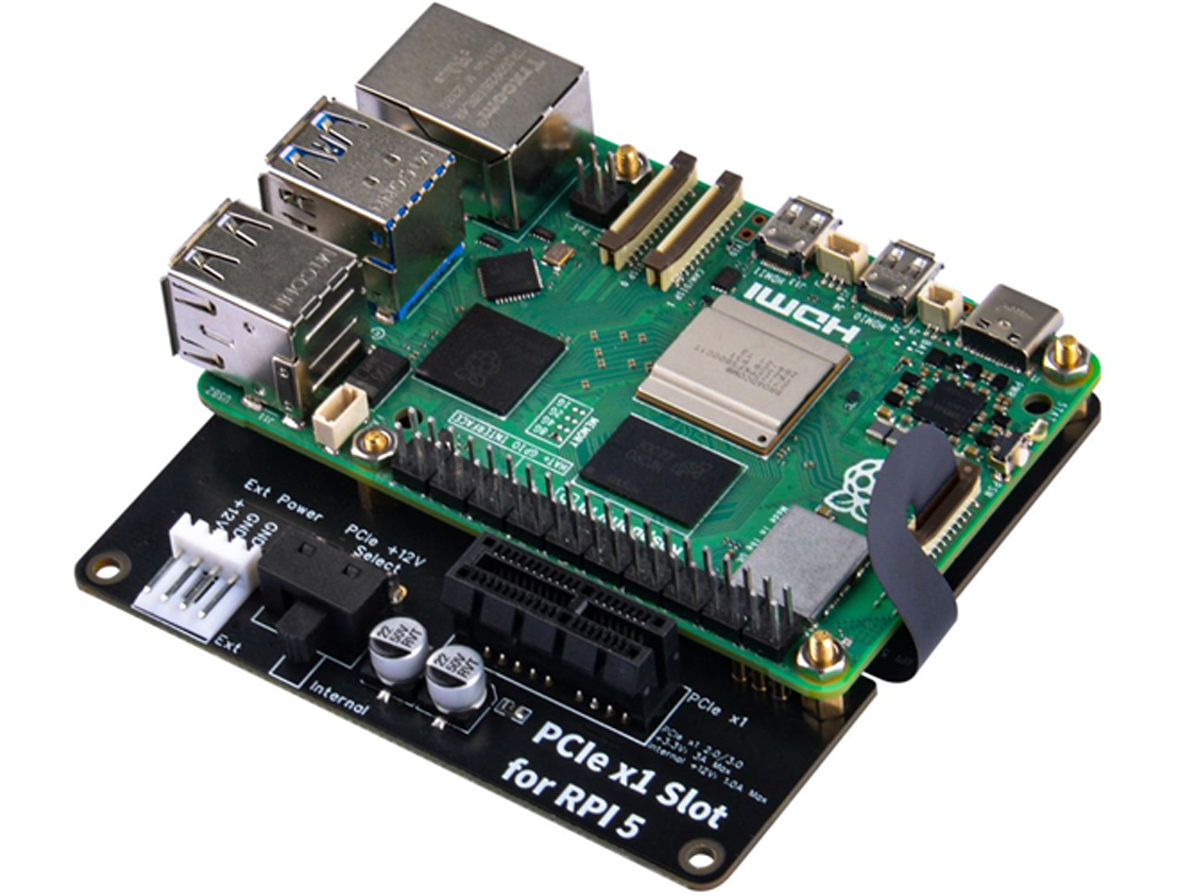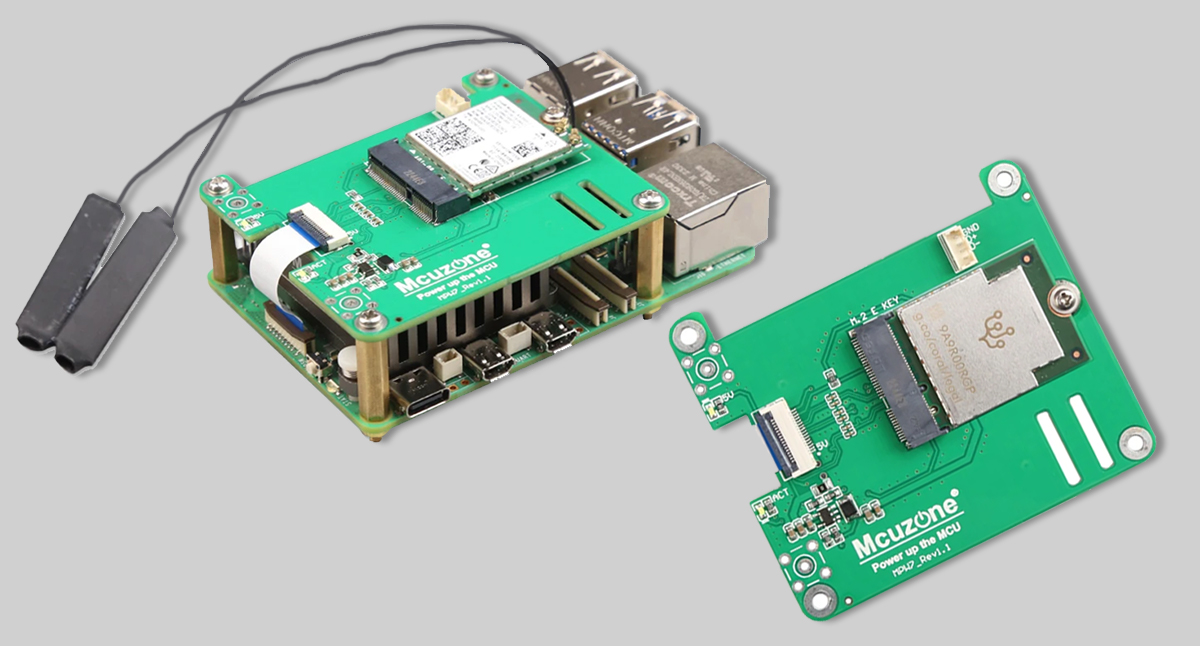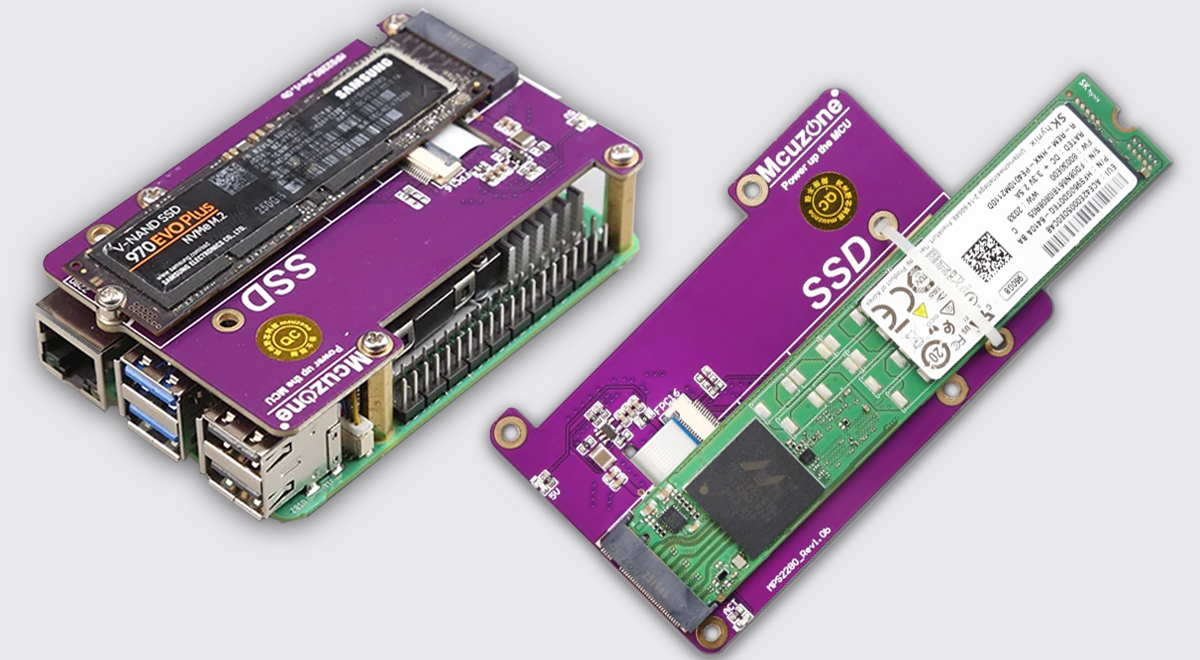Efinix Titanium Ti375 SoC combines high-density, low-power Quantum compute fabric with a quad-core hardened 32-bit RISC-V block and features a LPDDR4 DRAM controller, a MIPI D-PHY for displays or cameras, and 16 Gbps transceivers enabling PCIe Gen 4 and 10GbE interfaces. The Titanium Ti375 also comes with 370K logic elements, 1.344 DSP blocks, 2,688 10-Kbit SRAM blocks, and 27,53 Mbits embedded memory, as well as DSP blocks optimized for computing and AI workloads, and XLR (eXchangeable Logic and Routing) cells for logic and routing. Efinix Titanium Ti375 specifications: FPGA compute fabric 370,137 logic elements (LEs) 362,880 eXchangeable Logic and Routing (XLR) cells 27,53 Mbits embedded memory 2,688 10-Kbit SRAM blocks 1,344 embedded DSP blocks for multiplication, addition, subtraction, accumulation, and up to 15-bit variable-right-shifting Memory – 10-kbit high-speed, embedded SRAM, configurable as single-port RAM, simple dual-port RAM, true dual-port RAM, or ROM FPGA interface blocks 32-bit quad-core hardened RISC-V block […]
PineBerry Pi launches five additional HAT+ boards for the Raspberry Pi 5 with 2.5GbE, GbE, M.2 NVMe, and more
PineBerry Pi was the first company to launch a Raspberry Pi HAT+ board making use of the Raspberry Pi 5’s PCIe FPC connector with the Hatdrive! M.2 HAT for the Raspberry Pi 5 along with the HatDrive! Bottom expansion board that goes underneath the Raspberry Pi 5 SBC. The company has now launched five additional HAT+ boards for the Raspberry Pi 5 with various PCIe (NVMe/AI modules) and networking (2.5GbE, GbE) options. Here’s the list with basic specifications: HatNET! 2.5G – 2.5GbE for the Raspberry Pi 5 using a Realtek RTL8125BG controller, dedicated MAC address range (i.e. not randomly assigned), and an RJ45 jack with Activity and Link LEDs HatDrive! NET 1G – Gigabit Ethernet (Realtek RTL8111H) and M.2 M-Key socket for NVMe 2230,2242 SSD. Implemented through an ASMedia PCIe Gen 2 switch and booting with the SSD is not supported at this time. You may want to follow the […]
Compex WLE7002E25 is a dual-band dual-concurrent WiFi 7 module in standard mini PCIe size (Sponsored)
In today’s hyper-connected world, reliable and high-speed wireless connectivity is no longer a luxury, but a necessity. WiFi standards have evolved rapidly. WiFi 6, which has been around for only a few years, is now being replaced by WiFi 7 or IEEE 802.11be. Equipment manufacturers are now rushing to phase in WiFi 7 products. Compex has released its latest WiFi 7 module WLE7002E25 to help shorten time to market. The Compex WLE7002E25 is a dual-band concurrent 2×2 2.4GHz and 2×2 5GHz radio based on Qualcomm’s Waikiki high-performance WiFi 7 chipset which is capable of over 10Gbps raw data rate. It is in a standard mini PCIe form factor. WiFi 7 in a Standard Mini PCIe Form Factor The standard mini PCIe footprint means that WLE7002E25 is readily compatible with existing systems and designs, particularly customers whose devices have been using WiFi 4 or WiFi 5 standard mini PCIe modules. This […]
CWWK “Magic Computer” is a fanless Alder Lake-N mini PC with a PCIe x8 slot
CWWK Magic Computer is an unusual fanless mini PC offered with a range of Alder Lake-N processors from the Intel Processor N95 to the Core i3-N305 and a PCIe x8 slot allowing users to connect all sorts of PCIe boards on the side of the device for example for networking and/or storage. The mini PC supports up to 32GB DDR5, an M.2 NVMe (PCIe 3.0 x1) SSD, two SATA drives, and up to four 4K capable monitors through HDMI, DisplayPort, and USB-C interfaces. It is also equipped with two 2.5GbE RJ45 ports, four USB 2.0 ports, and a range of internal headers for a COM port, USB 2.0, a TPM, and optional fans. CWWK Magic Computer specifications: Alder Lake-N SoC (one or the other) Intel Processor N95 quad-core processor @ up to 3.4 GHz (Turbo) with 6MB cache, 16EU Intel HD graphics; TDP: 15W Intel Processor N97 quad-core processor @ up […]
BrainChip’s Neuromorphic Akida Edge AI Box is now available for pre-orders at $799
BrainChip has recently opened preorders for their Akida Edge AI Box, built in partnership with VVDN Technologies. This box features an NXP i.MX 8M Plus SoC and two Akida AKD1000 neuromorphic processors for low-latency, high-throughput AI processing at the edge. The system features USB 3.0 and micro-USB ports, HDMI, 4GB LPDDR4 memory, 32GB eMMC with up to 1TB micro-SDXC expansion, dual-band Wi-Fi, and two gigabit Ethernet ports for external camera connections, all within a compact, passively-cooled chassis, powered by 12V DC. BrainChip Akida Edge AI Box Specifications: Host CPU – NXP i.MX 8M Plus Quad SOC with 64-bit Arm Cortex-A53 processor running at up to 1.8GHz AI/ML Accelerator – Dual Brainchip AKD1000 (Akida Chip) over PCIe for efficient AI processing Memory – 4GB LPDDR4 Storage 32GB eMMC flash MicroSD card slot for additional storage options Display Output – HDMI output supporting up to 3840 x 2160p30 resolutions with a pixel clock […]
52Pi P02 PCIe expansion board for Raspberry Pi 5 features a PCIe x1 slot
The 52Pi P02 is an expansion board for the Raspberry Pi 5 that converts the Pi’s PCIe into a PCIe x1 slot. The board gets connected to the bottom of the Pi and taps into the Pi’s power with the help of onboard pogo pins. It supports PCIe Gen2/Gen3 speeds and features a JST connector for external power input. While writing about the 52Pi NVdigi Expansion Board, I found the P02 PCIe expansion board for Raspberry Pi 5 interesting. It features a PCIe x1 slot, allowing you to install various off-the-shelf accessories like network cards, USB expansions, and more. You can even use a PCIe riser to connect a GPU with standard PC products. This isn’t the only 52Pi product we’ve covered; we’ve also looked at the 52Pi water cooling kit and the 52Pi CM4 Router Board. Feel free to check those out if you’re interested in the topic. 52Pi […]
M.2 E-Key Wi-Fi 7 HAT for Raspberry Pi 5 also supports Google TPU
The Mcuzone MPW7 HAT for the Raspberry Pi 5 is designed to work with 2230 Wi-Fi 7 M.2 E-Key modules like the Intel BE200, AX210, and AX200, but the M.2 socket can also take Wi-Fi 6/6E modules as well as Google’s Tensor Processing Units (TPUs). It also integrates Bluetooth support via a 1.25mm USB interface on the HAT. Previously, we have covered many different HATs for the Raspberry Pi module, such as the Mcuzone MPS2280 M.2 NVMe HAT, Mcuzone MP4GM 4G LTE HAT, and the Sixfab 5G Modem Kit. Feel free to check those out if you are interested in Raspberry Pi 5 HATs. Mcuzone MPW7 M.2 E-Key Wi-Fi 7 module specification: M.2 E-Key socket supports 2230 modules WiFi modules compatibility – Supports M.2 E-Key modules like BE200, AX210, AX200, MT7922, Intel 8265C, etc… Bluetooth connectivity – 1.25mm 4-pin USB interface for Bluetooth integrated into the WiFi module connected to […]
Mcuzone MPS2280 M.2 NVMe HAT for Raspberry Pi 5 takes an up to 22110 Gen3 SSD drive
The Mcuzone MPS2280 M.2 NVMe HAT is another PCIe to NVMe adapter board built for the Raspberry Pi 5. What sets it apart from other boards is that it supports 2280 SSDs and offers the option to Jerry-rigg a 22110 SSD with zip ties. Previously we have covered many PCIe to NVMe expansion boards such as Pimoroni NVMe Base, Geekworm X1003 PCIe to NVMe SSD adapter, and PineBerry Pi’s HatDrive, so feel free to check those out if interested. Mcuzone MPS2280 M.2 NVMe HAT specifications: PCIe Support – Compatible with PCIe x1 interface, offering Gen2 and Gen3 modes. SSD compatibility – Supports M.2 M-key interface with 2280, 2242, and 2230 size SSDs, and offers the option to Jerry-rigg a 22110 SSD with zip ties. SSD booting – Enables booting from an NVMe SSD, with options for storage expansion. Alternatively, the system can boot from TF while using the SSD for […]


